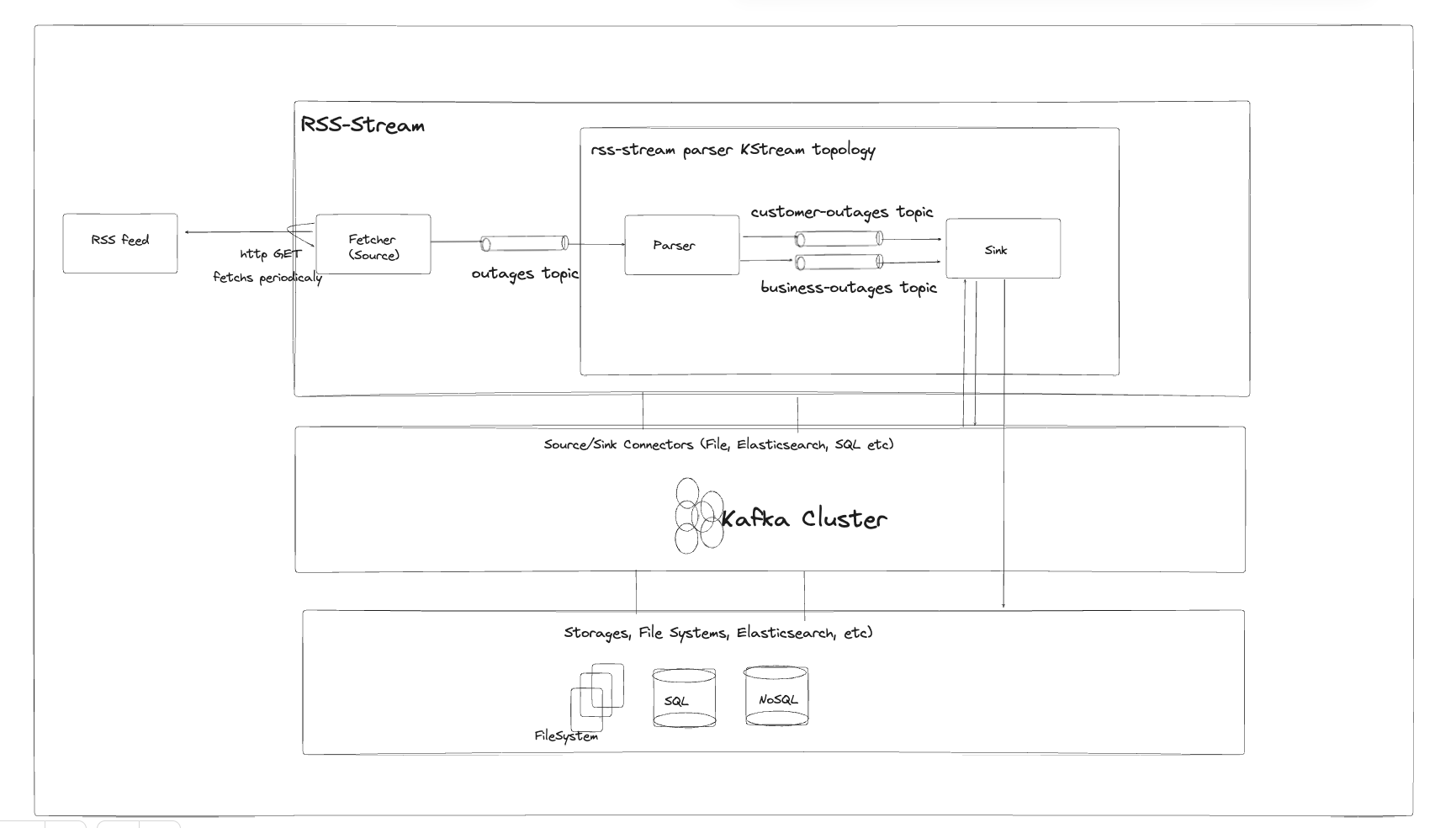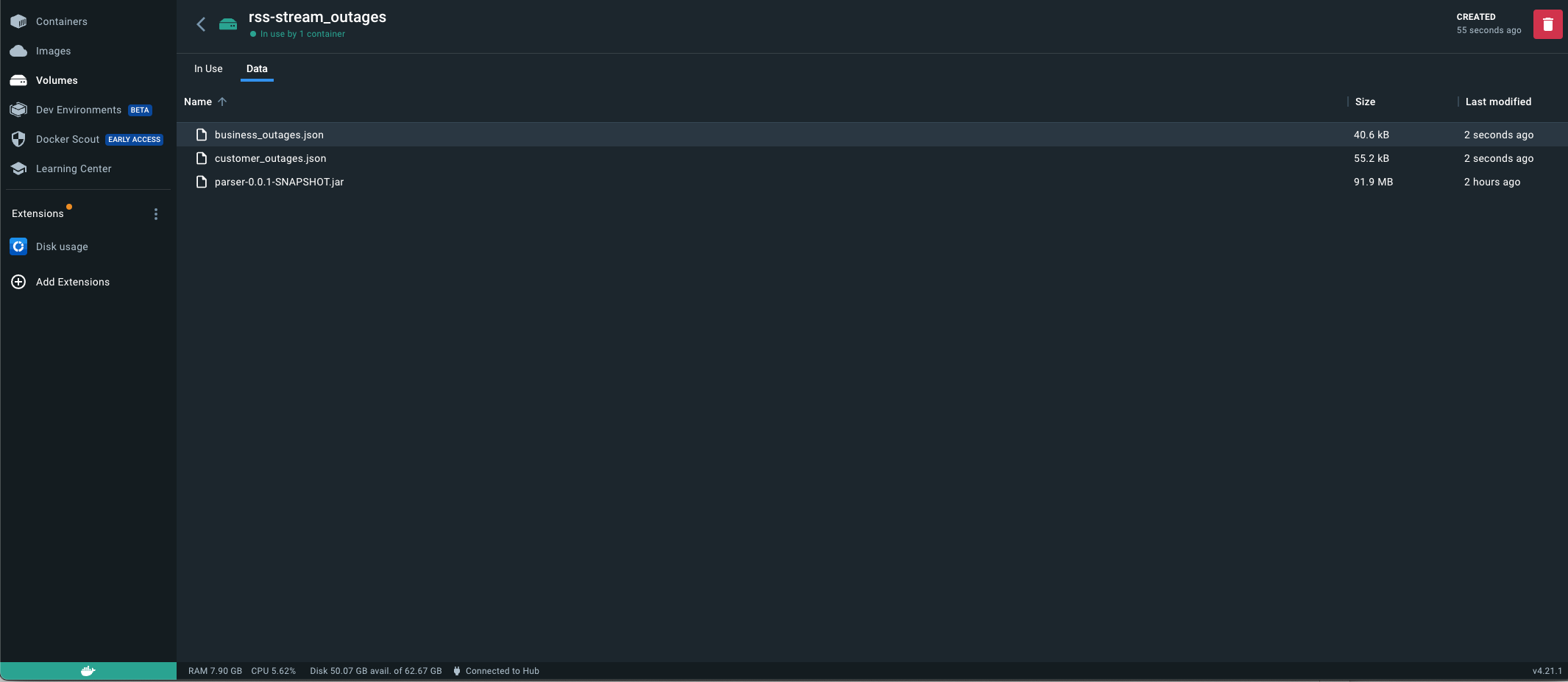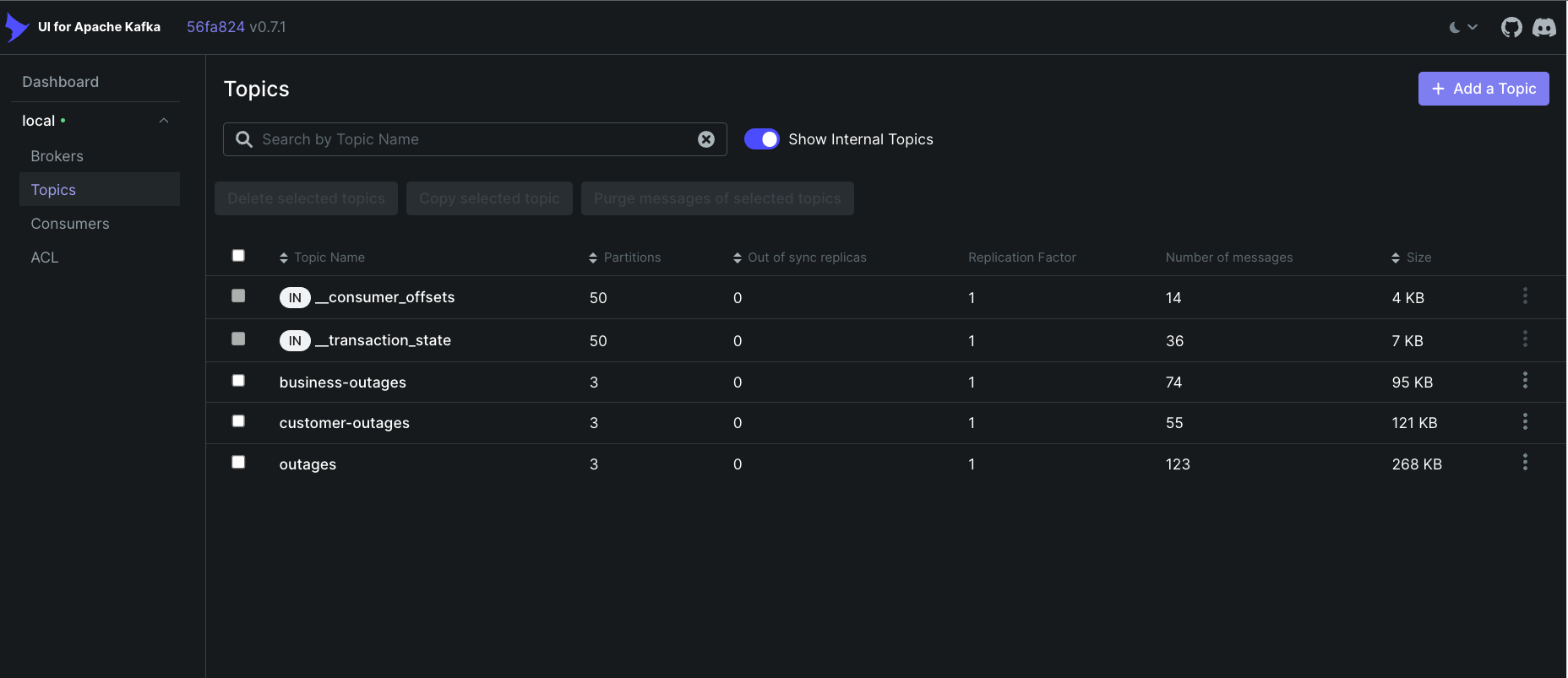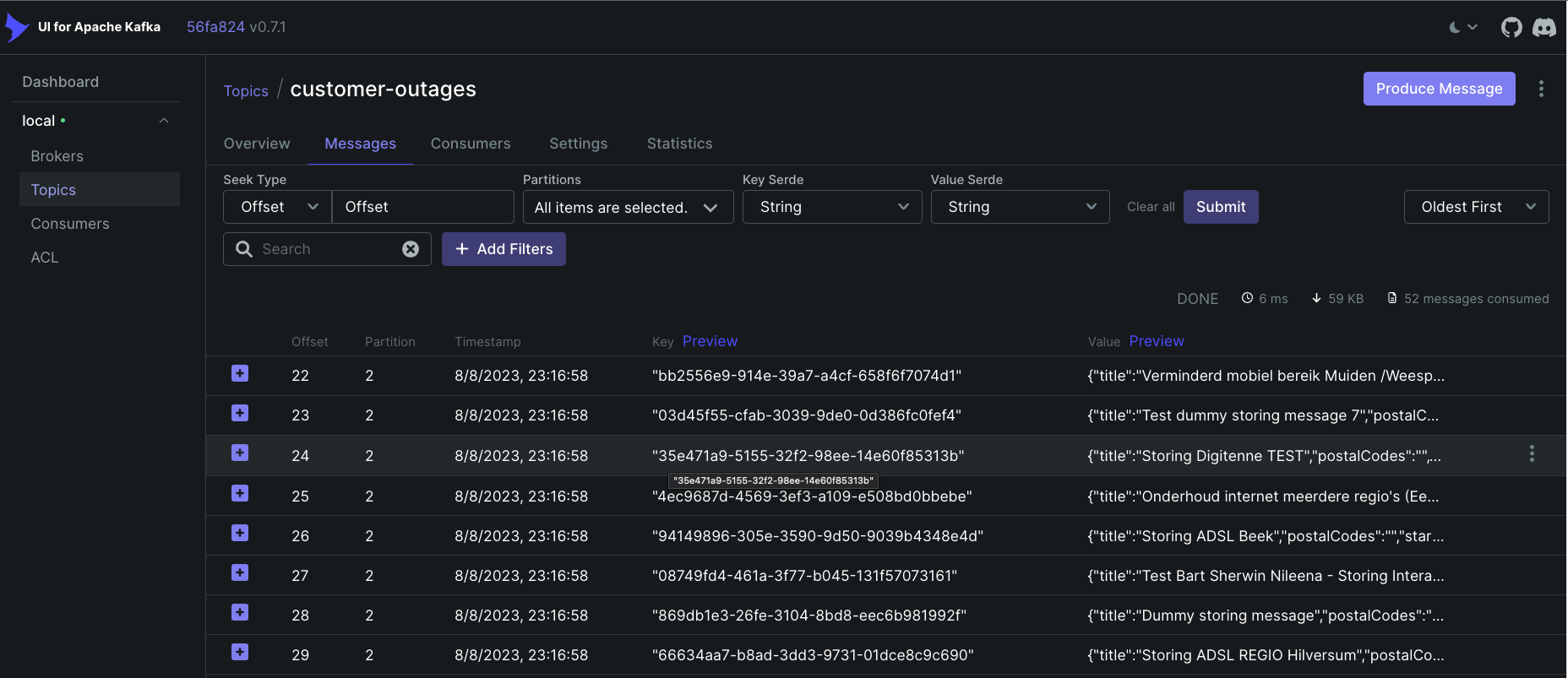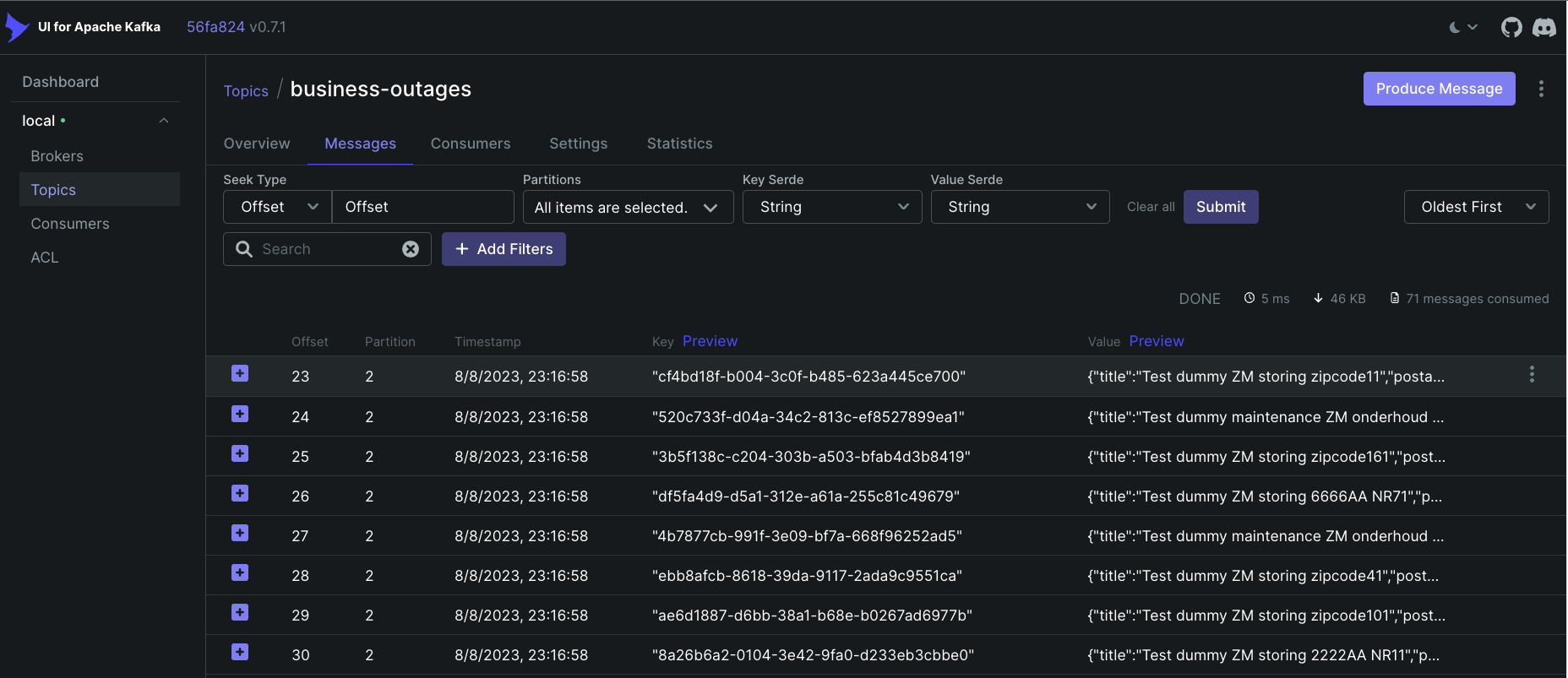An overview of the RSS Parser application, which consists of three modules: RSS Simulator, Fetcher, and Parser. The application utilizes KafkaStreams, Docker, Spring Boot, and Rome library for RSS parsing. Each module serves a specific purpose in the overall workflow.
-
RSS Simulator: This module acts as a web server and simulates a static RSS XML file. It exposes an HTTP GET endpoint that allows you to retrieve the simulated RSS feed. It is responsible for serving the XML file used by the Fetcher module.
-
Fetcher: The Fetcher module periodically fetches the RSS feed from the RSS Simulator. It retrieves the XML file, converts it into individual items using the Rome library, and publishes each item to the "outages" topic in Kafka. The Fetcher ensures a continuous stream of RSS items for further processing.
-
Parser: The Parser module is the core component of the application and is implemented as a KafkaStreams application. It consumes the outages topic, processes the incoming RSS items, and performs several operations on the data. The Parser module follows the streaming topology graph that is provided below to split the stream into two branches based on the outage type. It then sinks the data for each branch into separate topics, namely business-outages and customer-outages These topics can be used for further analysis,querying or new streaming topologies.
The Parser module also includes additional sub-topologies for global stores, as mentioned in the graph below. These sub-topologies are responsible for collecting outages data and storing it in GlobalPersistentKeyValue stores based on RocksDB. The data is stored in two key-value stores, one for business outages and the other for customer outages. These stores can be used for further analysis or querying. Furthermore, the Parser module includes a component that periodically flushes the key-value data from the KafkaStreams stores into JSON files. Specifically, it generates two JSON files: customer_outages.json and business_outages.json. These files contain the respective data from the key-value stores and can be used for external processing or reporting.
The RSS Parser application utilizes the following technologies:
- Java 17: LTS version of Java.
- KafkaStreams: A powerful library for building stream processing applications using Apache Kafka.
- Docker: A containerization platform used to package the application and its dependencies into containers.
- Spring Boot: A Java framework that simplifies the development of standalone, production-grade applications.
- Rome: A Java library for parsing, generating, and manipulating RSS and Atom feeds.
To run the application, please follow these steps:
- Clone the repository and ensure that Docker is installed and running on your machine.
- Navigate to the scripts folder in project directory by executing the following command in your terminal or command prompt:
cd scripts- Run the following script to start the application using Docker Compose:
sh start.sh- Run the following script to down the application using Docker Down:
sh stop.shcd scriptssh test.shMonitoring for Kafka http://localhost:8084
